FRED
BOLARINWA
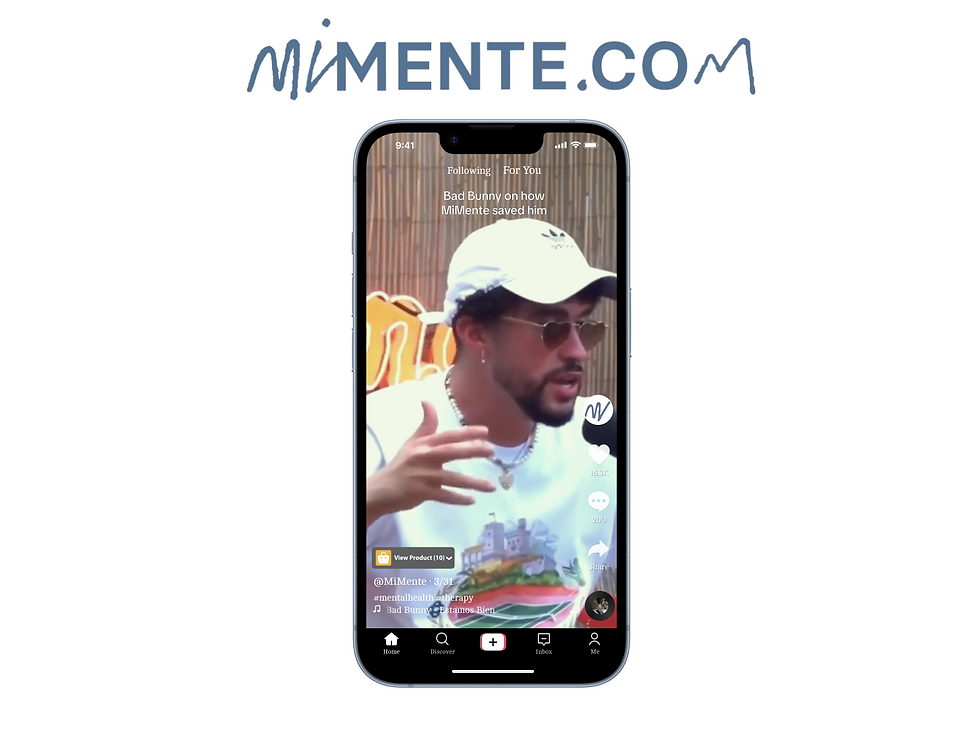
MiMente
U.S. Market Entry
Tools: Photoshop, Figma, Mural, Whiteboard, Copilot Designer
Team: Product Designers
Introduction: Mimente is Latin America’s first digital therapy clinic designed to match patients with skilled mental health professionals based on individual goals and needs. Based in Mexico, Mimente has thus far only served Latin America and is looking for a strategy to break into the U.S. market, starting with California’s market first.
Scope: They can serve B2C (anyone that wants to take therapy) but they are focused on serving B2B (corporations that want to offer therapy to their employees
Task: To help illuminate the unknowns and advise MiMente’s approach to entering the U.S. (Very broad but through my work, it won’t be!)
Investigation Station
With such a broad project scope, there were so many unknowns. I didn’t know much about mental health (especially in the Latinx community), not to mention policies regarding therapy from countries outside the U.S. To top it off, I had no familiarity with their platforms, and my Spanish skills weren’t used since junior year of high school (we all know what pandemic hit after). It wasn't my first time working with a company, the freedom of the project made it daunting, still it was invigorating at the same time. I was ready to put in the work, ask all the questions, and help change a community.


To gain some insight into mental health in the Latino population, I decided to become Sherlock Holmes and start digging.
Initial Research

Why does this matter?
Our background research shows that, for those in the US, the relative recency of a lot of Latinx immigration means that there is still a strong connection to cultural heiratage and memory from peoples’ (or their family’s) country of origin. In 2022, more than 27 million Latinos identified with more than one race, and the number is growing. This complex interplay between individual/family and national group identity is very indicative of the Latinx experience in the US, and highlights the necessity for a more nuanced analysis in our interviews to understand how Mimente can address this to better understand its new unique US customer base, as it represents a vital distinction from their current customer base in Mexico and will likely have profound implications on their approach!
Diggin deeper

Competitive Research
What better way to enter a market, than looking at the competition?
We then decided to take a deep dive into MiMente's website. We looked at the pros and cons, marketing, user experience, and price points of different platforms.

Here are our takeaways
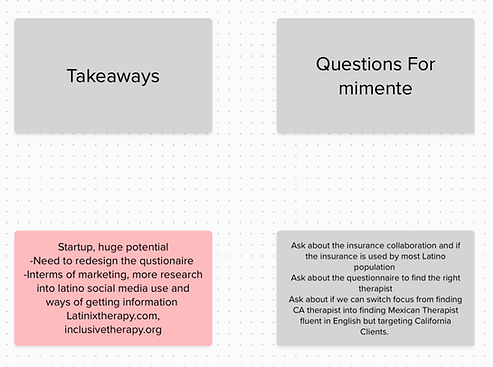
Why did we choose these initial research methods?
I wanted to familiarize myself with the population, but also get an understanding of what MiMente has in its arsenal and where it’s lacking.
This would help us guide the type of interview questions we make
Speaking of interviews....
The background research guided our questions for our second method of UX research, interviews!
It’s time to start finding problems!!
(I call this my "instigating phase”)
UX RESEARCH METHOD 01: INTERVIEWING
Our initial research made us focus less on the status of the software currently, rather than addressing the sort of barriers that prevent Latinos from getting mental support and therapy. If MiMente specifically can break those barriers, it will serve as the fastest way to win this market.
We conducted around 8 one-on-one interviews with these key insights

UX RESEARCH METHOD 02: Street Interview
We then wanted to hear raw feelings from different people, on a regular day, so we went to a Hispanic street vendor spot off of Foothill Blvd, in Claremont, California.
We used multiple models to invoke raw feelings and capture the real responses of Hispanic/Latinx people:
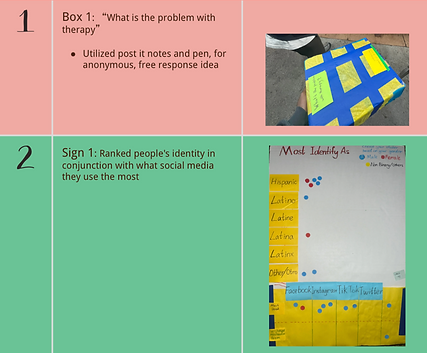
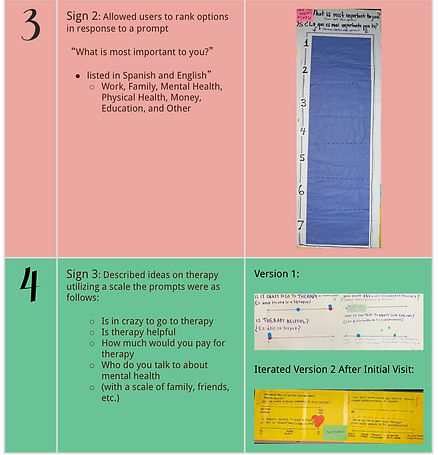
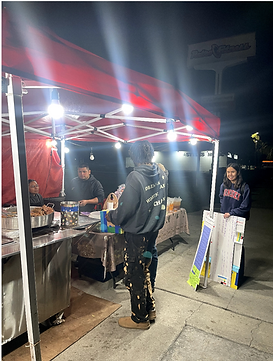

Here are some key insights:

Our Main Takeaways
There is a disconnect between mental health and therapy
Mental health is only important in connection to other areas of your life (ability to be a good parent, good worker, etc) but not by itself
Lack of understanding that therapy is ongoing, rather think they can go only a few times and it will fix their problems
People do not have the time or energy to explore mental health especially when working to provide for their family's survival
Women have a support system, but men rely a lot on others (friends), but even then, they feel like have to be more independent (especially within machismo culture)
ENTERING
......
PROBLEM DEFINITION!
We used frameworks like empathy maps, 2x2s, and the 5 whys, but our best insights came from our AEIOUs, Iceberg model, and Personas


The iceberg model is a framework that helps to see the visible aspects of a concept. It helps us dig deeper and see the “below the surface” thoughts, the ones that are more hidden and subconscious.
In this case, we utilized it to help us understand what Latinx people openly think about mental health versus the unspoken ideas tucked away. The creation of our iceberg model mainly stems from our observations from our street interviews.
Due to how broad of a playground we were given, we realized we had to focus in.
By making connections between interviews, we made 3 personas



Ideation!
Here are some frameworks we used for ideation!



HMW (How Might We)



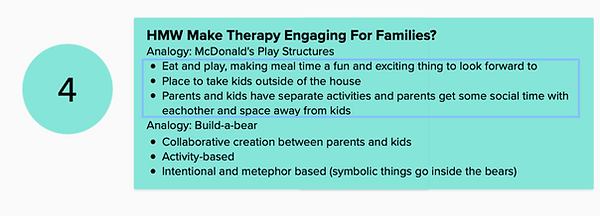

By identifying our HMWs, we devised detailed versions of ideation to leverage the strength of community bonds, providing spaces for users to share experiences, receive encouragement, and gain practical advice from peers who understand their specific challenges.
With all that in mind,
it's time to design!!
We came up with 3 prototype ideas based on our synthesis
IDEA 1
A mental health tool kit!

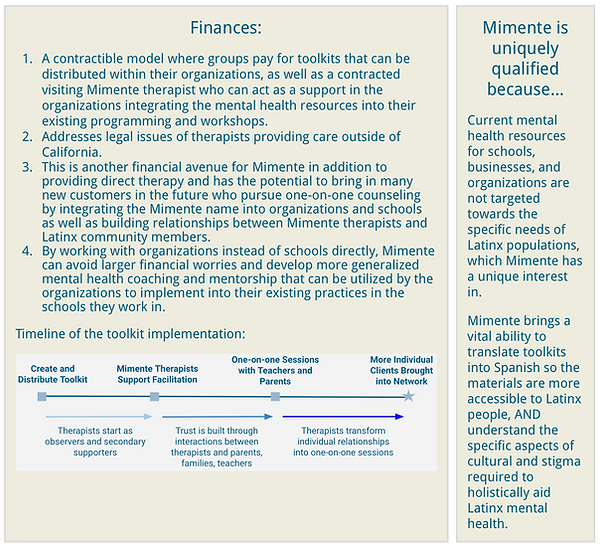
(High fidelity prototypes after testing section)
IDEA 2!
ANONYMOUS CHAT FEATURE & LIVESTREAMS
Starting off with wireframes
We

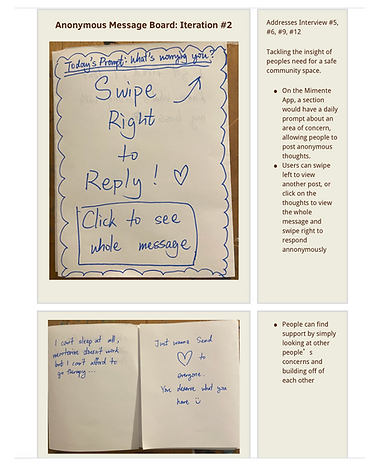


IDEA 2.5!
Moving to the low fidelity prototype
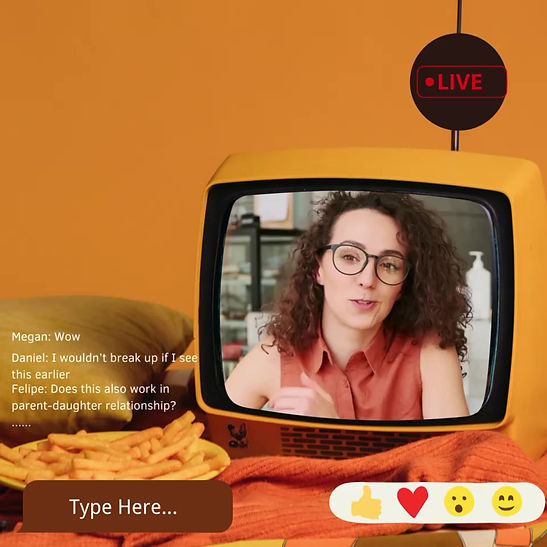
A live personal testimony to create interpersonal connection
Utilizes chat feature similar to Idea 2
(eventually we scraped it due to legalities on therapist licensing from Mexico)

IDEA 3!
(I recreated the TikTok UI from scratch in Figma)
Brand Ambassadors!
Utilizes TikTok shop to sell MiMente as a product
With the increase in use of advertising on the app, utilizing influencers, celebrities, and community members will help draw Latinx people to MiMente.
This will also help break stigma, and bring people who don't typically use mental health resources to MiMente as they see people important to them using it.
Ideas 2-3 can be stand-alone, as part of MiMente's platform, and incorporated in the toolkit as well!
TESTING
To test this prototype, we wanted to run an example workshop with actual potential users. So, we reached out to Uncommon Good, a non-profit organization in California that works with low-income families and students, to run a mental health-related workshop with them.
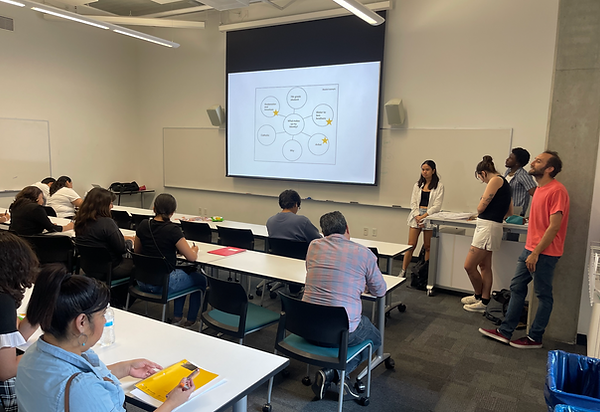





Iteration 2
Since the emotional impact of the workshop on the parents was a lot clearer, that might be a better audience to target than kids initially to help Mimente figure out what strategies are successful overall. Also, because it seemed like parents were more able to connect their life experiences to abstract concept of identity as a means of processing, likely that kids are not able to do that psychologically yet and thus the strategies for connecting to them that Mimente would need to employ would be very different.
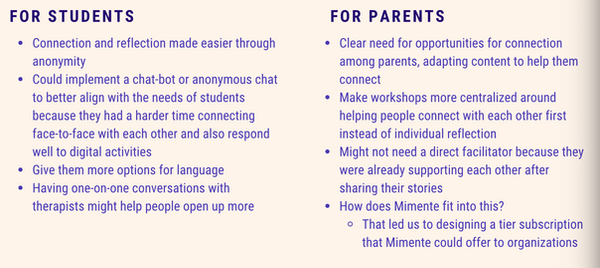
Testing
(anonymous chat system)
To test our anonymous chat feature, we decided to survey people at a huge, primarily Latinx, open air market. More specifically, we wanted to see how people responded to a personal question if their answers were anonymous, emulating an anonymous chat.


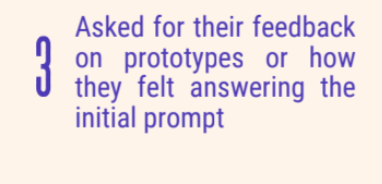

AND THE TIME COMES,
the HIGH fidelity mockups I designed!
*But first, a quick prototype overview*
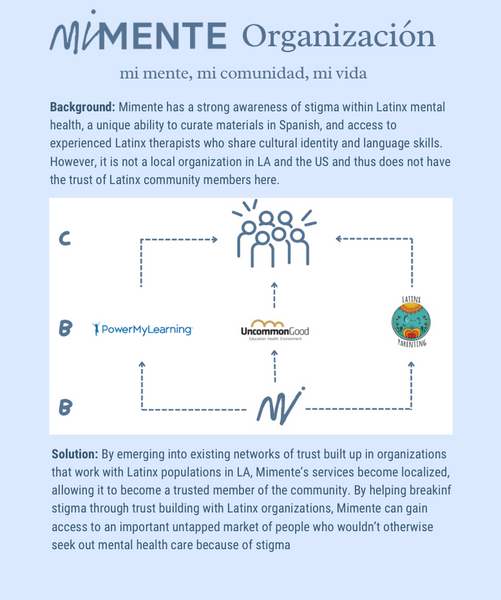
ONLINE TOOLKIT
I opted for a simpler look due to an insight we got from our testing.
Those struggling with mental health issues, and stressed organization leaders, don't want anything complicated, as it can be overwhelming, making them less inclined to use the product
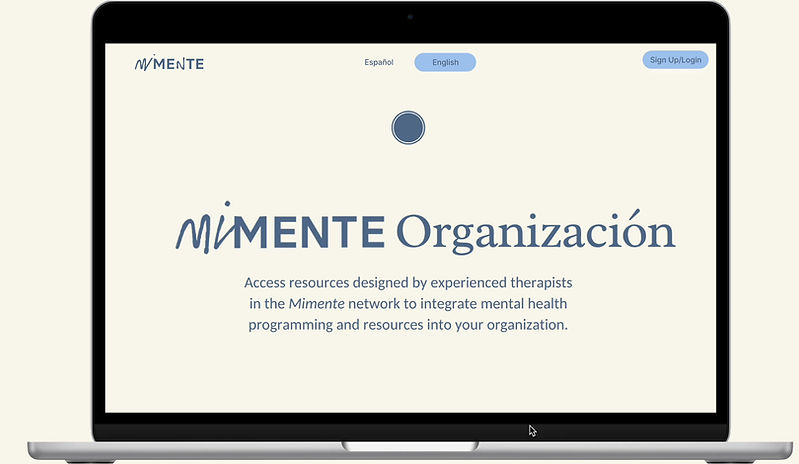

Hey there! So sorry! I'm working on getting approval to include the chat system mockup!

My reflection
Something new that I learned…
The importance of consent. Consent, Consent, Consent. It's something we always learn in"class", but at first thought, you wouldn't think it was that important in design work. I realized the big emphasis on consent when certain people prefaced that they weren't okay with their faces being seen, or their identity being associated with their response. The idea of consent forms utilizing written or verbal consent became a constant practice with my interview and testing work (Along with this idea, compensating people for their time was big too!).
My biggest challenge was…
Working on a project that was quite literally undefined. With such a broad scope and a completely unknown system, the task ahead seemed daunting. With so much freedom comes a lot of space to design! The little direction in the project also allowed us to organically come up with a solution, dig very deep, and find the real problem that needed to be solved.
My favorite part was…
Connecting with families, hearing people's vulnerable and authentic stories. These stories are ones that will never leave me as long as I live, and I'm extremley grateful to everyone who shared their stories with me.
